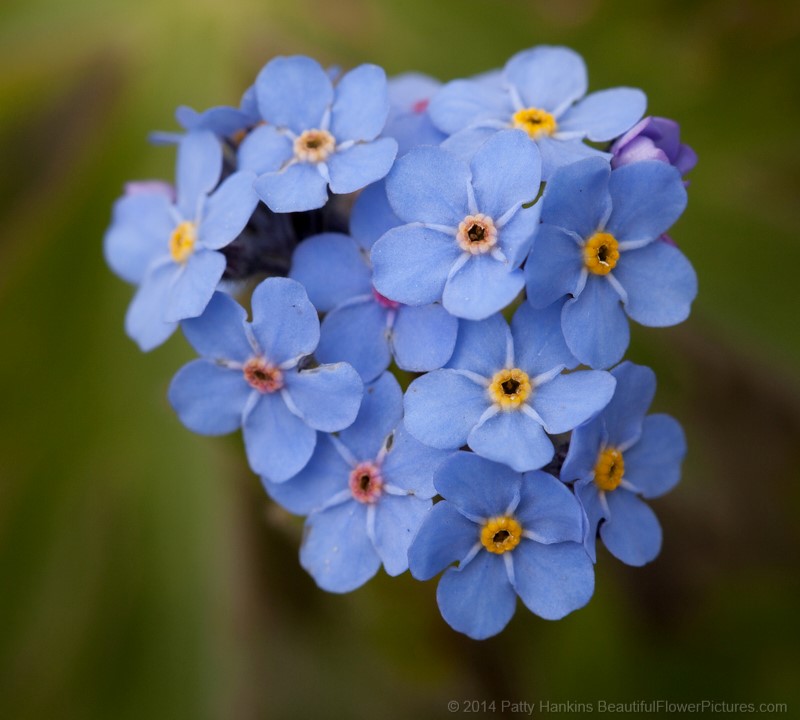
by hankinslawrenceimages | Oct 1, 2014 | Boraginaceae Family, Flowers, Montana, Wildflowers
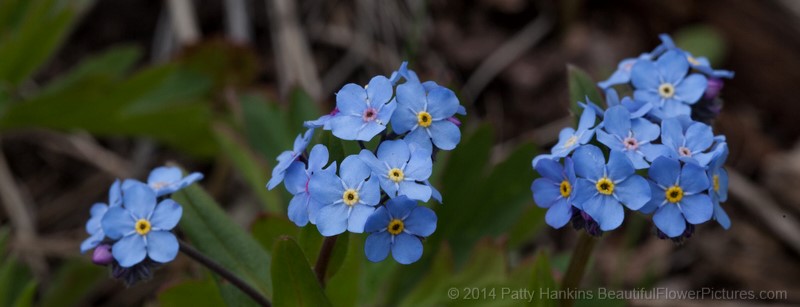
Mountain Forget Me Not © 2014 Patty Hankins
One of the beautiful wildflowers I discovered at Yellowstone National Park a few years ago was Mountain Forget-Me-Not (myosotis asiatica). The delicate little blue flowers were wonderful to see in the grand landscapes of Yellowstone.
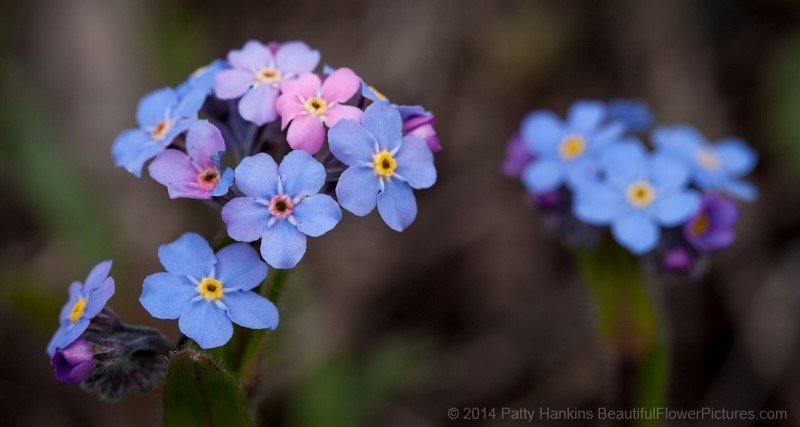
Mountain Forget Me Not © 2014 Patty Hankins
Also known as Asiatic or Woods Forget Me Not, myosotis asiatica is a member of the borage family. It is native to Montana, Idaho, South Dakota, Alaska and British Columbia.
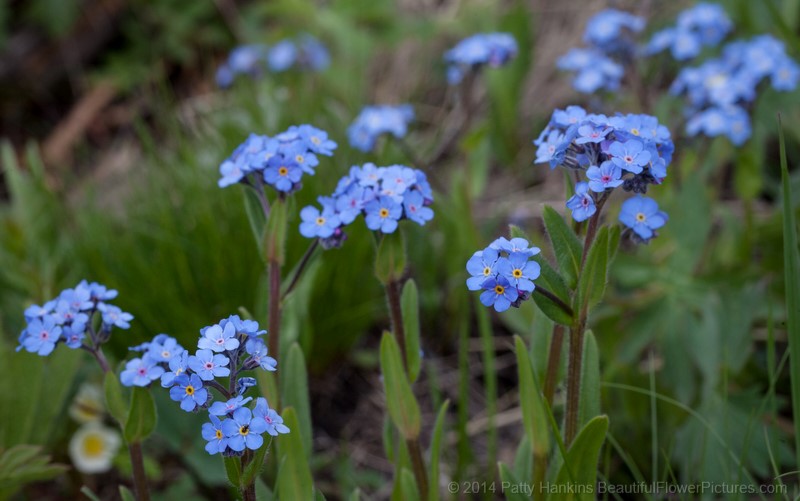
Mountain Forget Me Not © 2014 Patty Hankins
Mountain Forget Me Not can grow to as tall as 40 cm. The leaves are oblong to elliptical in shape. Flowers are very small (about 3-5 cm across) in a lovely shade of blue with pink and/or yellow centers.

Mountain Forget Me Not © 2014 Patty Hankins
Mountain Forget-Me-Not has been used medicinally over the years from being used in lotion form to treat eye diseases to being used to treat wounds when ground into a powder. As with all information about traditional uses of plants, I’m sharing it for informational purposes – not recommending it for a medical treatment. Please consult your doctor or other medical personal before using Mountain Forget-Me-Not as a treatment for any medical condition.
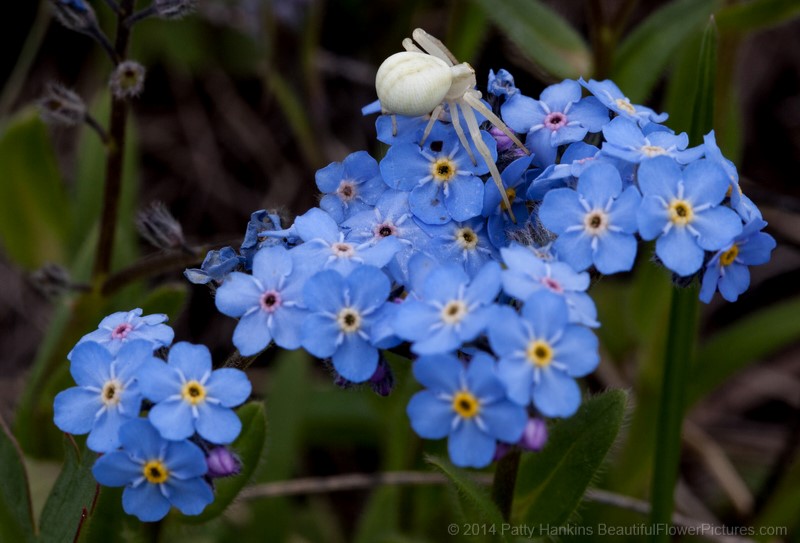
Mountain Forget Me Not © 2014 Patty Hankins
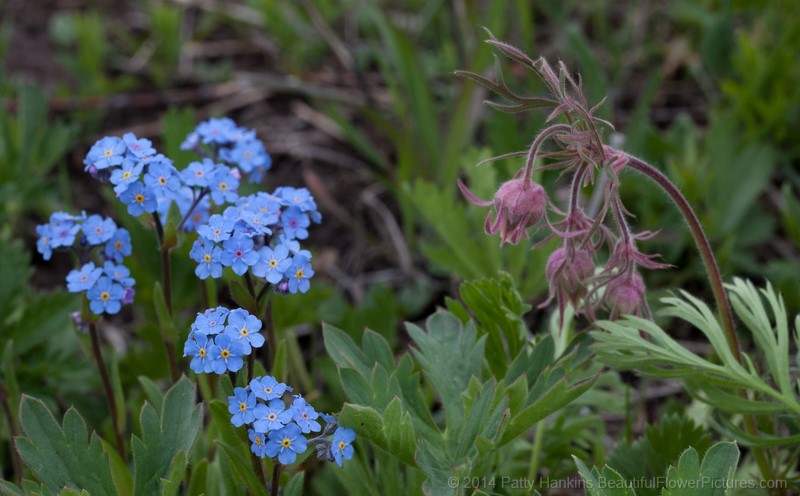
Mountain Forget Me Not and Prairie Smoke © 2014 Patty Hankins
In addition to the Mountain Forget-Me-Not that I photographed in Yellowstone National Park, I photographed what I believe is a related species at Grand Teton National Park. I haven’t been able to identify what this wildflowers is – but it certainly looks like another type of Forget-Me-Not. If you know what it is – I’d really appreciate it if you could let me know 🙂
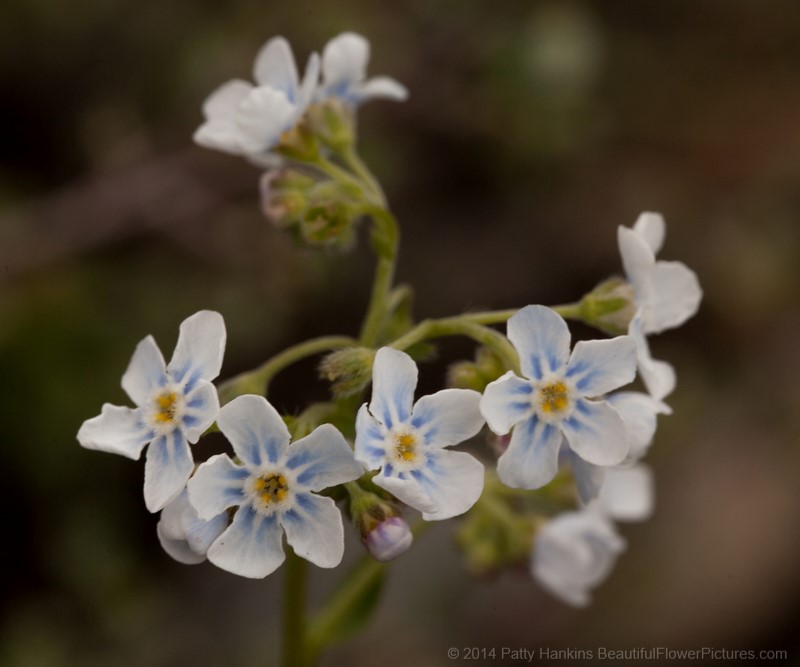
Forget Me Not © 2014 Patty Hankins
You can find more information about Mountain Forget Me Not at
USDA Plant Profiles
Montana Plant Life
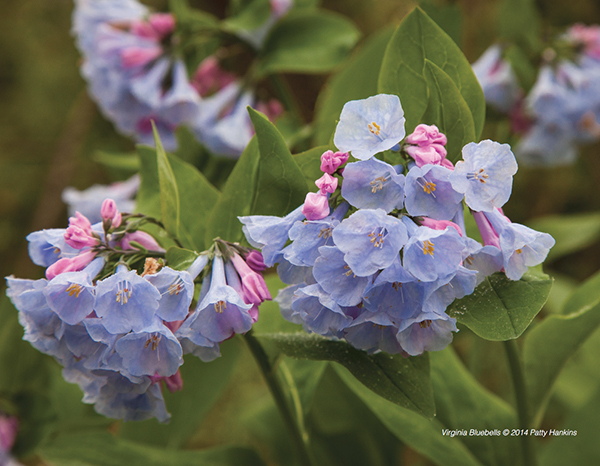
by hankinslawrenceimages | Sep 5, 2014 | 2015 Wildflower Calendar, Boraginaceae Family, Flowers, Wildflowers

Virginia Bluebells © 2014 Patty Hankins
When the Virginia Bluebells (mertensia virginica) bloom in the DC area I know that spring is finally here!
The Virginia Bluebells bloom here in late March/early April and if you see them at just the right time – it looks like the woods are carpeted with wildflowers. One of the most popular local places to see the bluebells is at Bull Run Regional Park in Centreville, Virginia where there is a well-marked bluebell trail that wanders through the woods. It’s a beautiful sight.
Two of my other favorite spots to photograph bluebells are along the C&O Canal in Maryland and at Turkey Run Park in Virginia. In both locations there are wonderful patches of bluebells for taking macro photos – and usually many fewer people than are at Bull Run Park.
Virginia Bluebells are one of the wildflowers featured in my 2015 Wildflower Calendar. My calendar features photographs of twelve different wildflowers I’ve taken in recent years.
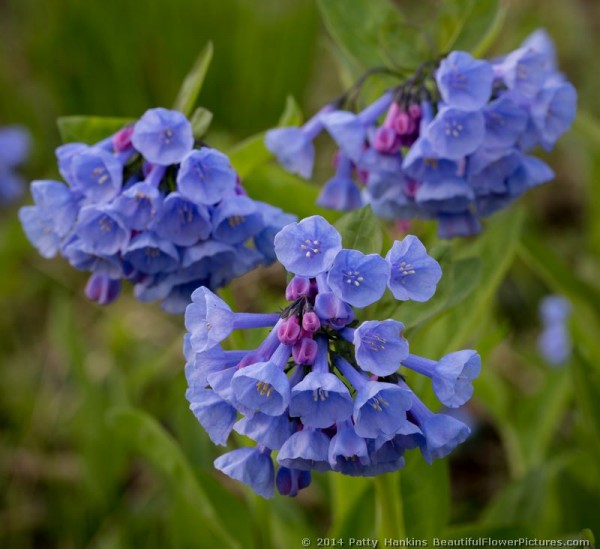
by hankinslawrenceimages | Apr 29, 2014 | Boraginaceae Family, Flowers, Wildflowers
Just as the blooming of the bluebonnets means spring in Texas – the blooming of the Virginia Bluebells (Mertensia Virginica) means the wildflowers and spring are here in the Washington DC area. I love photographing the Virginia Bluebells – they add such a bright splash of color to the woods in the spring. The bright green leaves and blue (and occasionaly a few pink) blossoms are a wonderful contrast to all the shades of brown.
Here are some of my favorite photos of Virginia Bluebells I’ve taken in recent years.

Virginia Bluebells © 2014 Patty Hankins
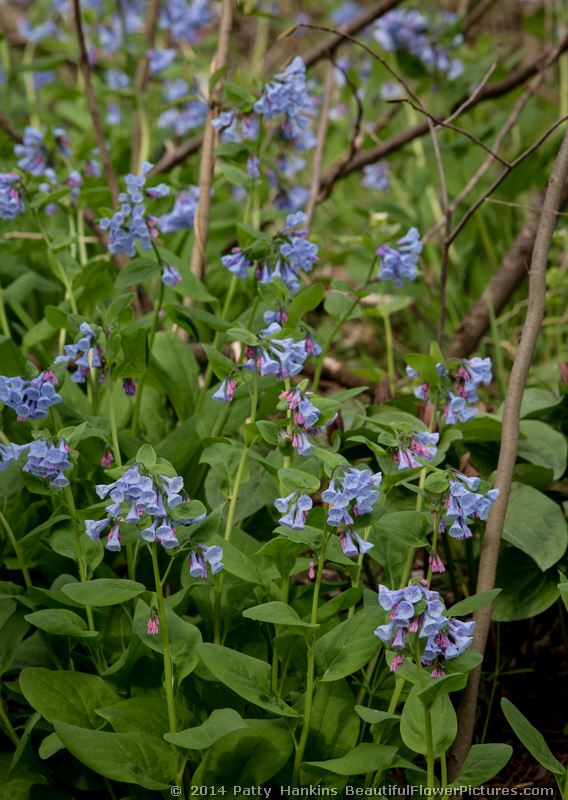
Virginia Bluebells © 2014 Patty Hankins
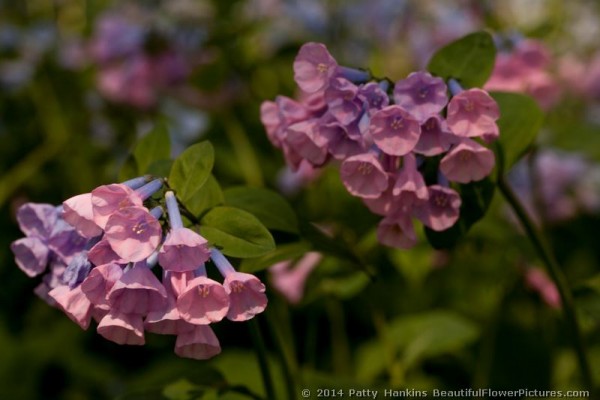
Virginia Bluebells © 2014 Patty Hankins
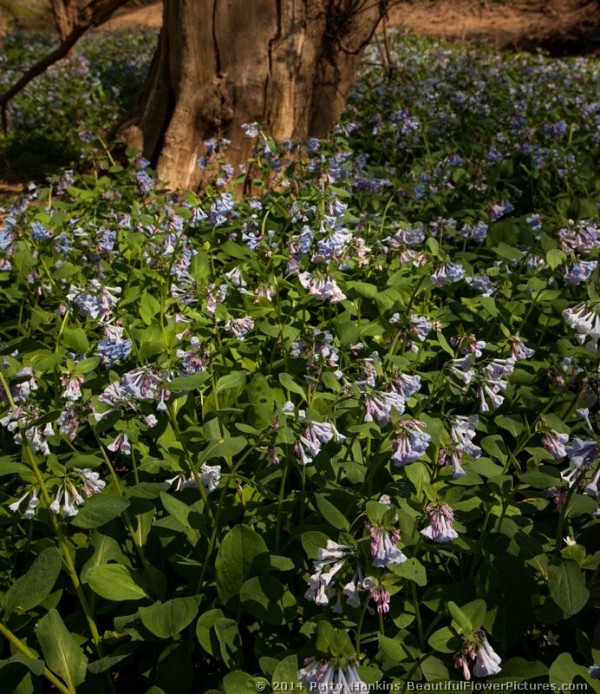
Virginia Bluebells © 2014 Patty Hankins
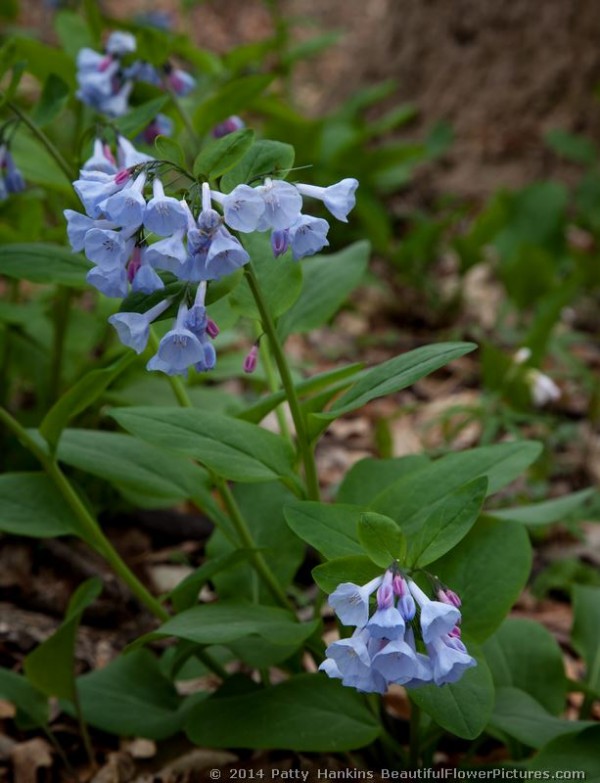
Virginia Bluebells © 2014 Patty Hankins
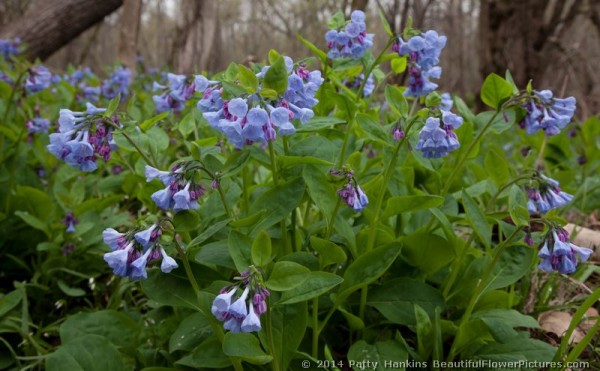
Virginia Bluebells © 2014 Patty Hankins
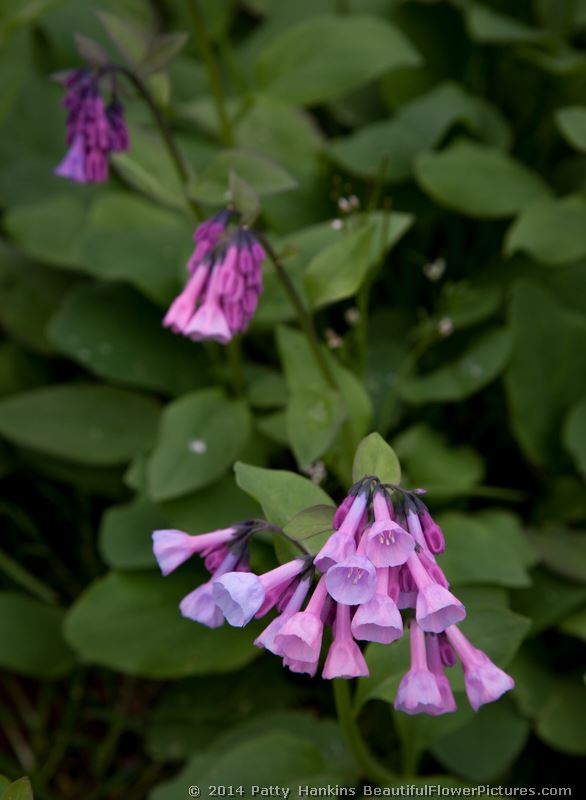
Virginia Bluebells © 2014 Patty Hankins

Virginia Bluebells © 2014 Patty Hankins

by hankinslawrenceimages | Jan 23, 2013 | Boraginaceae Family, Flowers, Wildflowers
When you mention spring wildflowers in the Washington DC area, the first flower that comes to mind for most people are the Virginia Bluebells. These delicate blue flowers bloom in late March and early April – and if you catch them at the right moment – you often see the forest carpeted with wildflowers.

© 2013 Patty Hankins
Virginia Bluebells – mertensia virginica – are members of the Borage or Forget-Me-Not family. They are native to most of the eastern United States and Canada with the exception of Louisiana, Florida, Vermont, New Hampshire, Connecticut and Rhode Island. They are listed as threatened in Michigan and vulnerable in New York.

© 2013 Patty Hankins
Bluebell plants grow to about 2 feet tall. They have silver green leaves. The flowers start as pink buds – which open out to the light blue flowers. Occasionally, you’ll see flowers that remain pink after they open.

© 2011 Patty Hankins
The flowers of the Virginia bluebells are often described as either trumpet or bell shaped. They have five petals that fuse to create a tube, five stamens and a center pistil.

© 2013 Patty Hankins
Bluebells grow in the woods – in areas of part shade. They prefer areas with plenty of water – moist woods and river bottoms.

© 2013 Patty Hankins
Native Americans used parts of the Virginia Bluebell plants to treat a range of illnesses including whooping cough, tuberculosis and venereal diseases. It was used as an antidote to some poisons.

© 2010 Patty Hankins
Every spring I love seeing the Virginia Bluebells in bloom. I’m already thinking about where I’ll go to photograph them this year. one of my favorite places to photograph them is at Bull Run State Park. Do you have a favorite place to photograph theVirginia Bluebells?
More information about Virginia Bluebells can be found at
Lady Bird Johnson Wildflower Center
Missouri Botanical Garden
Native American Ethnobotany Index
USDA Plant Profiles

























